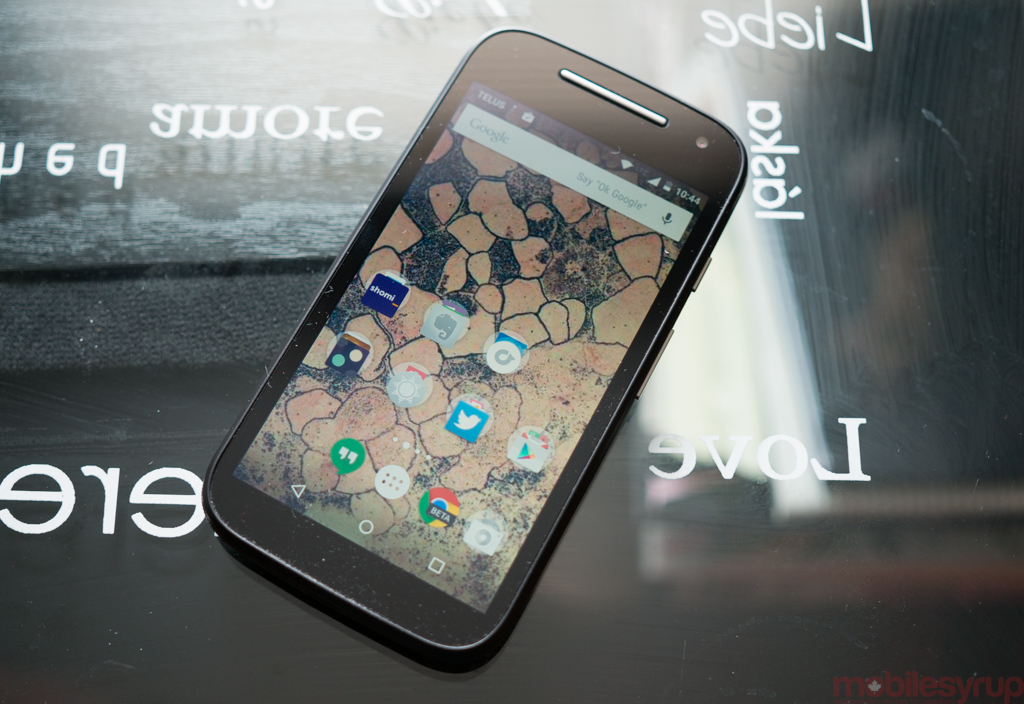
If years ago you’d have predicted where Motorola’s mobile strength would be, ultra-cheap, high-quality smartphones wouldn’t have been high on most peoples’ lists.
The company that attempted to bring back the luxury RAZR brand by slapping on its rear a piece of Kevlar has made a name for itself, since its purchase to and subsequent sale from Google, in what is quickly becoming the most important area of the mobile market.
The new Moto E, coming in April to TELUS, Koodo and Videotron for around $150 outright, is the perfect mélange of the company’s two higher-priced products, the Moto G and Moto X, without sacrificing the marketing message that made the first generation E so good.
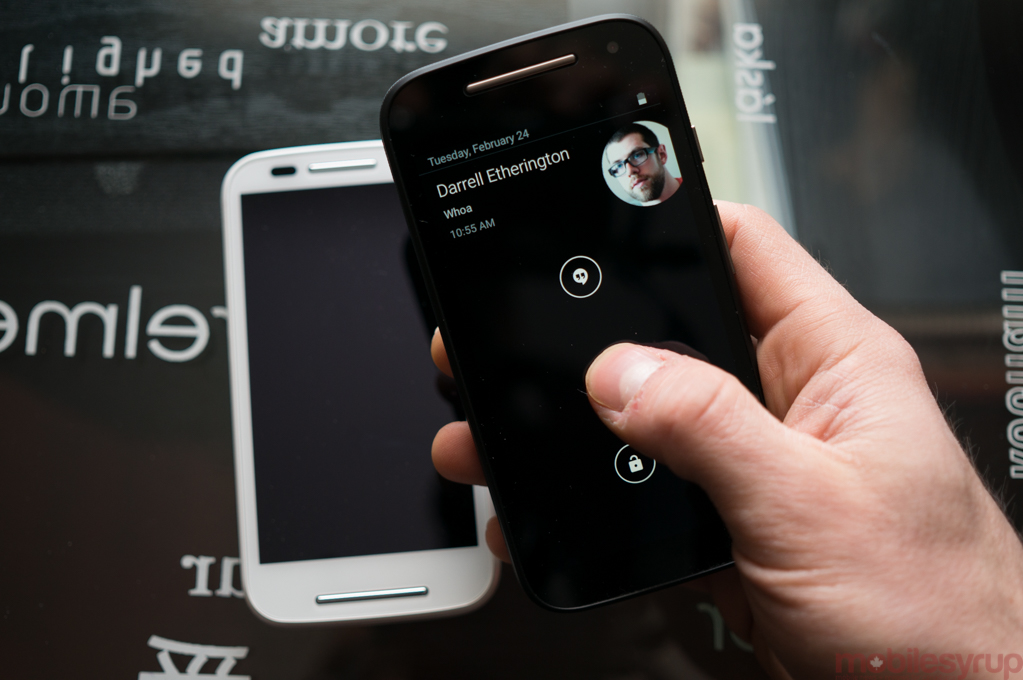
Aimed at first-time smartphone buyers, the new Moto E is the first Motorola device with a 64-bit chip, and the low-cost, decent-performance processor enables some features, like Moto Display, Actions, and Assist, that were only possible on the much more expensive Moto X lineup.
At 4.5-inches, the device’s screen is marginally bigger than the original E (and, non-coincidentally the same size as the original Moto G, which was replaced late last year with a larger 5-inch model), and while its resolution remains the same at 960×540 pixels, Motorola has makes use of a high-contrast LCD panel to enable the Moto Display features Moto X users love.
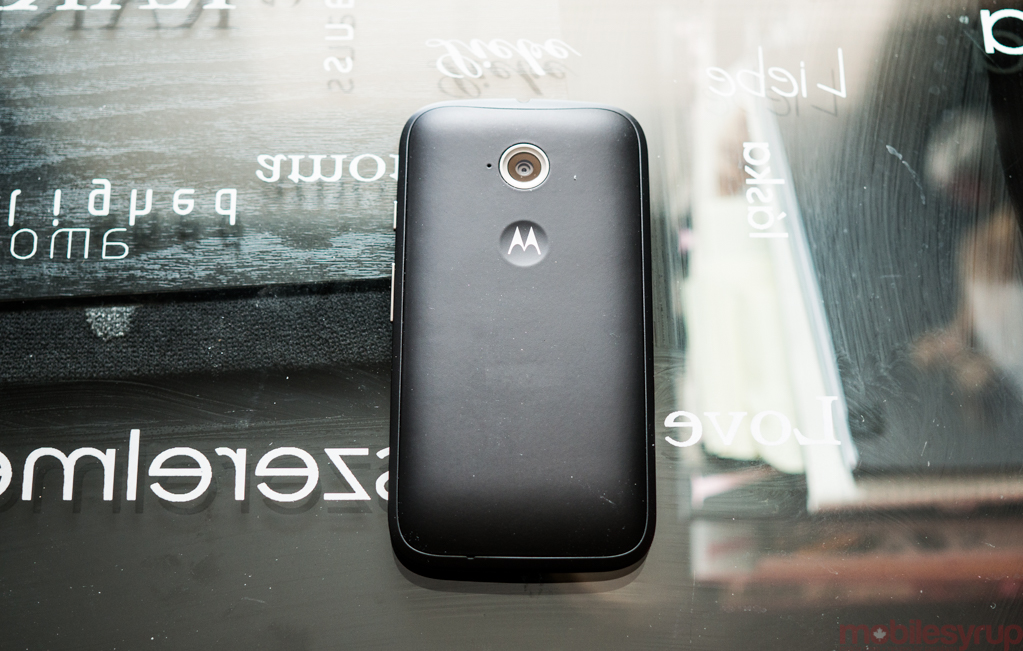
(Perhaps most interesting about the addition of Moto Display to the Moto E is that it is skipping the Moto G entirely, and potentially alienating a group of users who may be hung up on device lineup hierarchy.)
It’s difficult to call the Moto E attractive, all stout and thick as most inexpensive smartphones are, but it’s considerably more so than its predecessor, which looked like what would happen if you scrunched up a piece of paper and let it unfurl on its own. Not only is the second-generation Moto E slimmer, but Motorola has managed to find budget in its margins to use the higher-quality, creak-free plastic from its G line.
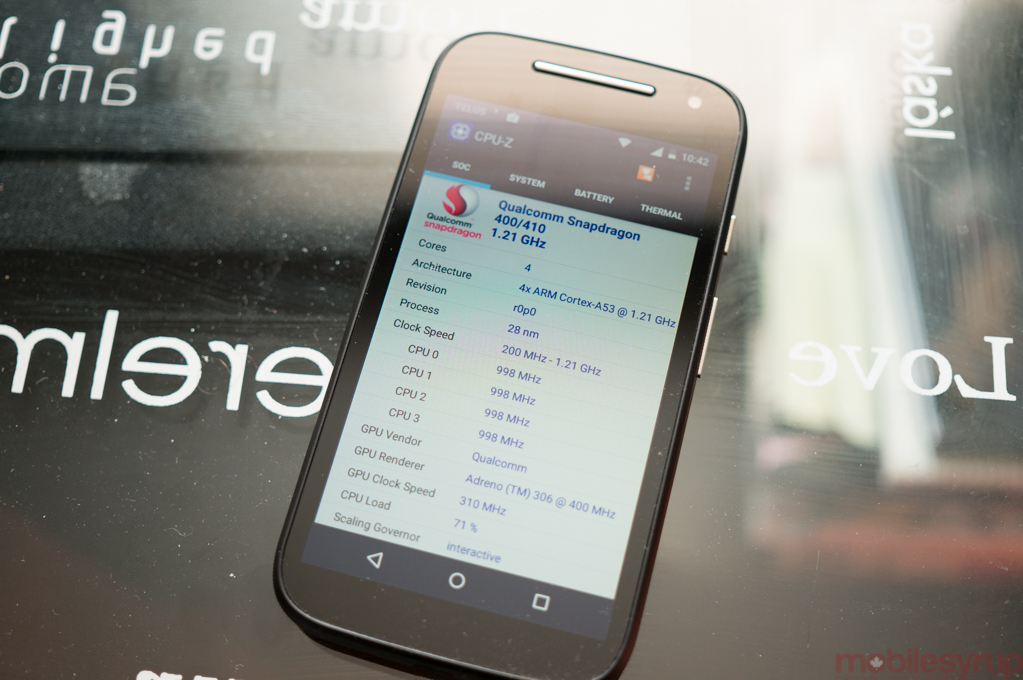
Running stock Android 5.0.2, the Moto E’s interface unsurprisingly bears a resemblance to that of the Moto X, just scaled down for its lower resolution. Performance was uncharacteristically good for a device in this price range, attributable to a 64-bit quad-core 1.2Ghz Snapdragon 410 SoC, the first we’ve played with in a shipping product. Android 5.0.2 scales well to this screen size and resolution, and apps optimized for Google’s newest operating system fared well with just 1GB of RAM.
Unfortunately, it does seem like memory — both derivatives — will be the bottleneck for users here. Memory management has been improved in Lollipop, but many apps leave traces of themselves upon closing, and after a few hours I noticed some slowdown that a reboot fixed.
Similarly, with just 5GB of usable internal storage, the Moto E almost certainly requires a microSD card to proffer an enjoyable user experience. Motorola makes it easy to transfer the contents of larger apps and games to a microSD card — it takes but one tap within Settings/Apps — but not all are compatible with the transfer, and after installing my “base suite” of apps, I quickly ran into “Insufficient Storage” messages.
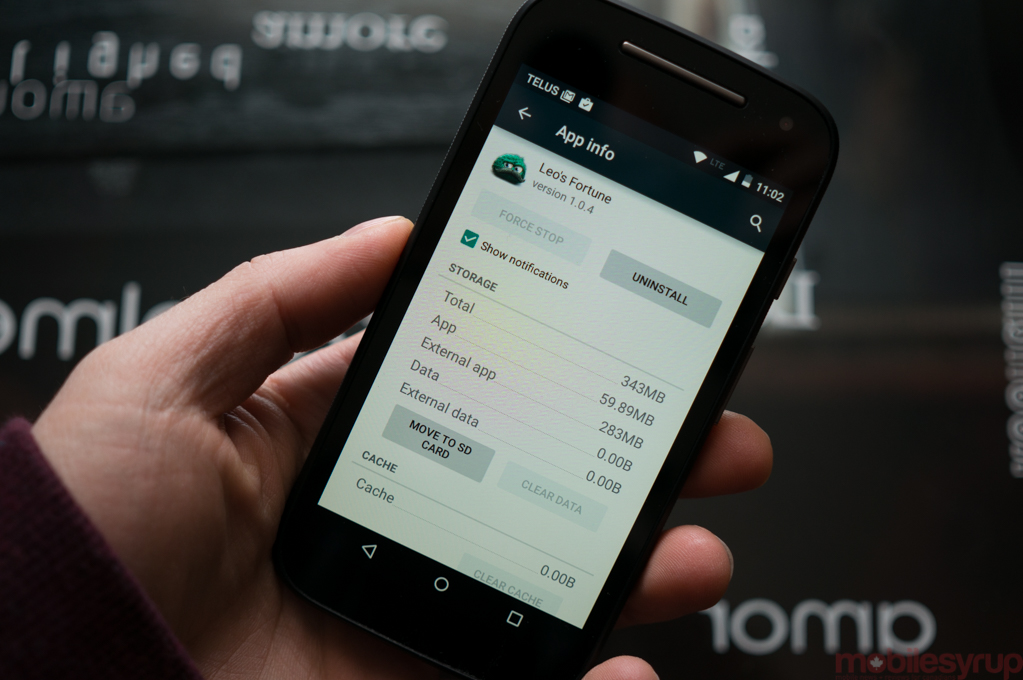
Worse is that Google pre-installs nearly 750MB of applications, including Google+ at nearly 120MB, that cannot be uninstalled. With cost clearly a factor here, Google should release some control of its app requirements to benefit devices such as the Moto E. Such a stipulation would also benefit Android One OEMs.
Perhaps the biggest boon for the North American market is the inclusion of LTE. Whereas the second-generation Moto G lacked that spec, which precluded it from carrier placement outside of WIND, the Moto E is being marketed, smartly, as a successor to the first-generation Moto G. Indeed, as confusing as Motorola’s lineup has become, with several variants of the G, including one with LTE, the value proposition of the new Moto E is simple: a great cheap smartphone that is optimized for the Canadian market in every way.
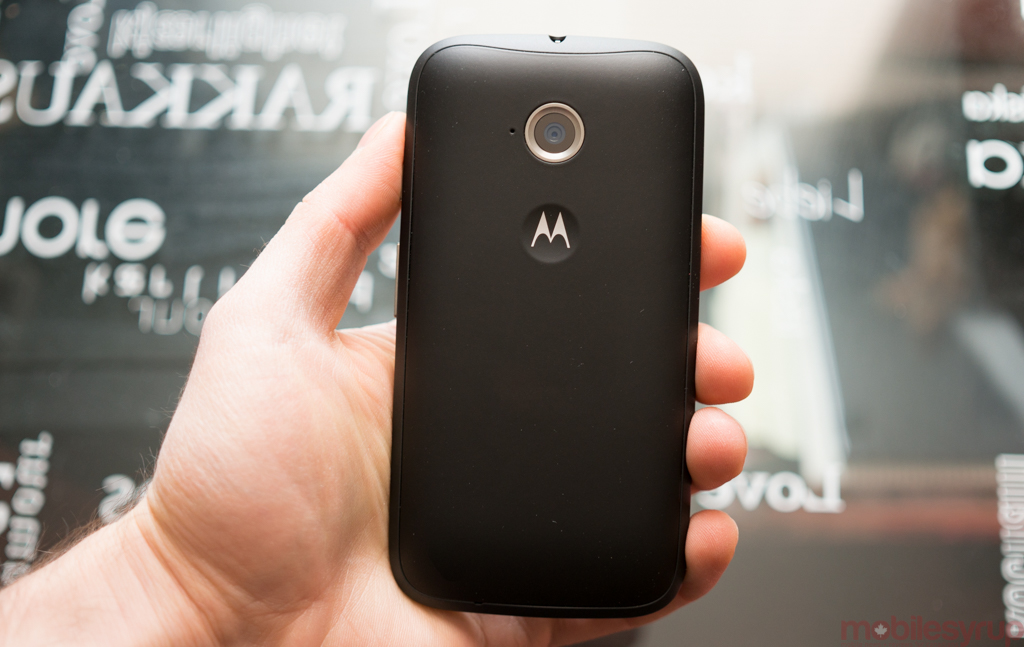
Even the 5MP camera, which hasn’t seen a resolution bump but has benefited from a new sensor and improved image signal processor in the Snapdragon 410, is a big improvement. I actually took good photos from this $150 smartphone. Motorola may be cheaping out in certain places, but the fast commoditization of hardware components like low-resolution camera sensors means that outside of resolution this is a primo experience. Even shutter speed is better than the second-generation Moto G.
Recall that the first-generation Moto E was marketed to upgrading from a feature phone. It was stout and rotund, had a mediocre screen and offered middling performance. Its camera was bad — it lacked a front-facing camera, which this one has — and the phone couldn’t be relied on to last the day on its battery. It was a good start, and for $129 USD / $179 could nary be criticized because of its price.
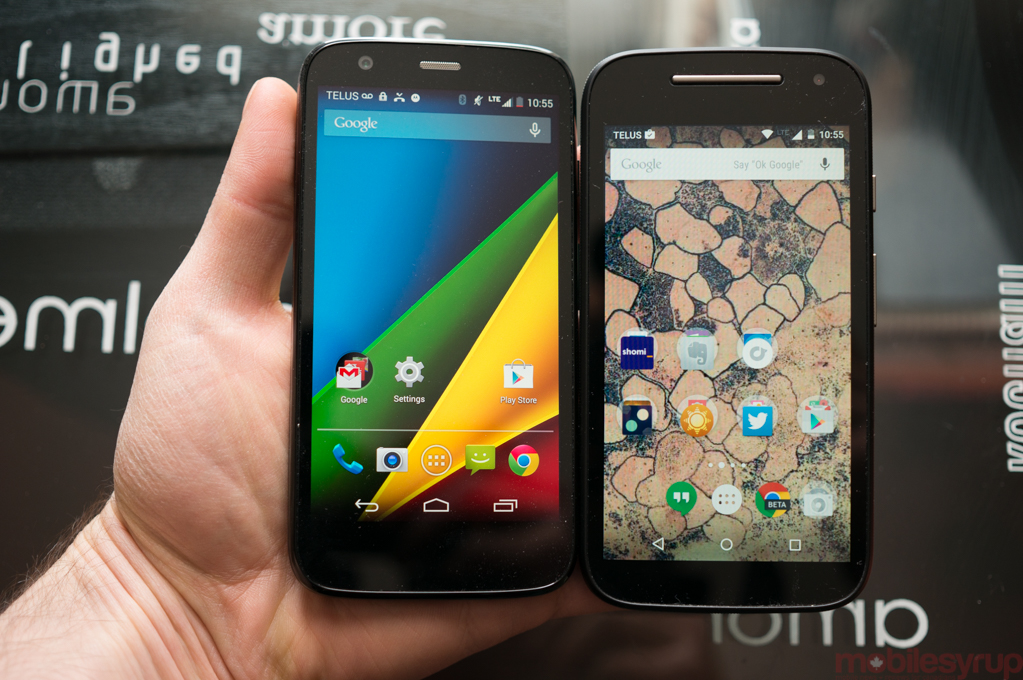
This time, the Moto E is a good smartphone, period. It’s better for most consumers than the second-generation Moto G, and certainly better than most entry-level smartphones from LG and Samsung. The only problem — and it’s one that will likely go ignored due to the target demographic — is the RAM count.
Android 5.0.2 runs fine on this phone, but Android is quickly bloating, as are the apps on which it runs, and the Moto E is only as good as its long-term prospects. Sure, at $150 users can afford to replace it every year, but a smartphone lives and dies on its reliability. It’s unclear whether the diminutive device will stand the test of time, but I’m eager to give it a try. This is a smartphone I’d keep in my pocket.
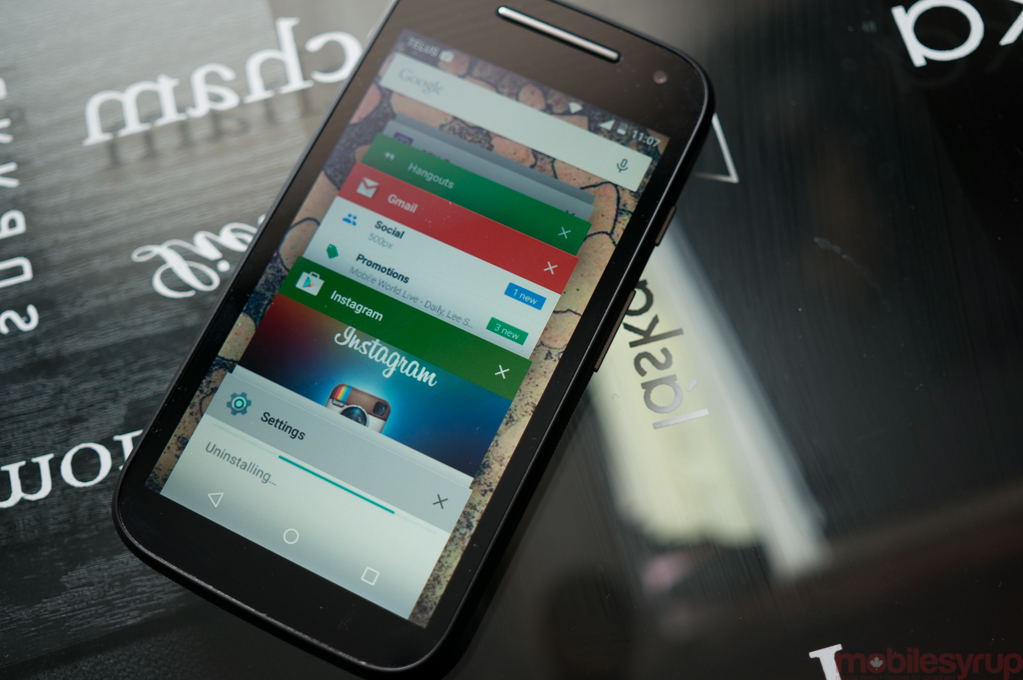
Finally, as Motorola is wont to do, the Moto E comes with a removable perimeter plate that can be customized with different coloured edges, or a clear case that wraps around the edges and back. It’s an easy way for customers to personalize the device, and for Motorola to recover some of the margins it loses by selling the Moto E itself near, presumably, cost. Pricing for the accessories haven’t been finalized, but look for something in the range of $10-30 depending on the fit.
Motorola’s strategy is clear here: it’s not winning in the high-end, so try to bring as many of the features of its more expensive models to the entry level, so people in developing markets, and those with small budgets, can enjoy them. Then, if the opportunity rises, bring those customers — already loyal from a great customer experience — to the high-end product the next time they buy a phone.
Either way, Motorola wins.
Availability: TELUS, Koodo, Videotron in April; chatr wireless, MTS and WIND “this spring”
Price: Approximately $150 CDN
Specs:
- Android 5.0.2 Lollipop
- 4.5-inch qHD (960 x 540 pixels) IPS LCD display
- 1.2Ghz quad-core Snapdragon 410 SoC
- 1GB RAM, 8GB internal storage (5GB usable, microSD slot available)
- 5MP rear camera, VGA front-facing camera
- 2390mAh battery
Update: An earlier version of this article claimed the Moto E had an OLED display. This is since been updated to mention high-contrast LCD, as confirmed by Motorola. Sorry for the confusion.
MobileSyrup may earn a commission from purchases made via our links, which helps fund the journalism we provide free on our website. These links do not influence our editorial content. Support us here.


